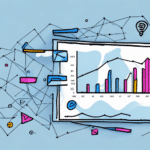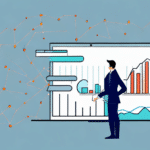The Importance of Customer Retention
As a business owner, you know that retaining customers is essential to your success. A high customer retention rate means that your clients are happy and loyal, and it's often more cost-effective to keep existing customers than to acquire new ones. To help you improve your retention rates, we've put together a comprehensive guide to the best tools and strategies for customer retention.
Why Customer Retention Matters
Customer retention should be a top priority for your business for several reasons. Firstly, it's more cost-effective to retain existing customers than to acquire new ones. According to a study by Harvard Business Review, it can cost up to 5 times more to acquire new customers than to retain existing ones. Additionally, repeat customers tend to spend more and make larger purchases over time.
Focusing on retention also helps build a base of loyal customers who are more likely to refer your business to others, enhancing your brand reputation and expanding your customer base organically.
The Cost of Customer Acquisition vs. Retention
Acquiring new customers involves significant investments in marketing, advertising, and sales efforts, which can be expensive and time-consuming. In contrast, retaining customers requires ongoing communication, support, and personalized attention. By investing in customer retention tools and strategies, you can reduce your acquisition costs while maximizing revenue.
Research by Bain & Company indicates that increasing customer retention rates by just 5% can boost profits by 25% to 95%. Loyal customers not only spend more but also bring in new customers through word-of-mouth referrals.
Key Strategies for Enhancing Customer Retention
Utilizing Customer Retention Tools
Customer retention tools are vital for automating processes, tracking customer behavior, and personalizing communication. Tools like HubSpot, Salesforce, and Zoho CRM help businesses manage customer data, monitor interactions, and identify opportunities for upselling and cross-selling.
Implementing Loyalty Programs
Loyalty programs incentivize customers to stay engaged with your business by offering rewards and exclusive perks. Platforms like Smile.io and Yotpo enable businesses to create points-based systems that customers can redeem for discounts or free products. Regularly updating your loyalty program with seasonal promotions and limited-time offers keeps customers excited and engaged.
Personalization Techniques
Personalization is crucial for building strong customer relationships. By tailoring your communication and offerings to individual preferences, you provide a more satisfying experience. Tools such as Segment and Optimizely allow you to segment customers based on attributes like location, purchase history, and behavior, enabling personalized recommendations and targeted promotions.
A study by Epsilon found that personalized emails have a 29% higher open rate and a 41% higher click-through rate compared to non-personalized emails.
Leveraging Social Media
Social media platforms like Facebook, Instagram, and Twitter offer avenues to connect with customers on a personal level. By posting engaging content, responding to inquiries, and promoting exclusive offers, you can build long-term relationships. Tools such as Hootsuite and Buffer help manage your social media presence efficiently across multiple channels.
Leveraging Customer Feedback for Retention
Collecting and Analyzing Feedback
Customer feedback is a valuable source of insight into your business operations and customer satisfaction. Utilizing surveys, reviews, and other feedback channels helps identify areas for improvement. Tools like SurveyMonkey and Typeform facilitate the collection and analysis of customer feedback, enabling you to make data-driven decisions.
By addressing customer concerns, you enhance the overall experience, leading to increased loyalty. Additionally, feedback helps you stay ahead of competitors by identifying trends and adapting your products or services accordingly.
Identifying Loyal Customers
Analyzing feedback and purchase history allows you to identify your most loyal customers. These customers are more likely to recommend your business and make repeat purchases. Targeting them with special offers or exclusive loyalty programs further strengthens their loyalty and retention.
Effective Marketing Campaigns for Retention
Email Marketing Campaigns
Email marketing remains one of the most effective ways to communicate with customers and boost retention rates. Automated campaigns enable you to send targeted messages based on customer behavior and lifecycle stages. Platforms like Mailchimp and HubSpot allow you to create and manage sophisticated email campaigns.
Use email to promote loyalty programs, offer exclusive discounts, and provide personalized recommendations. Timely and relevant emails keep your brand top-of-mind and encourage ongoing engagement.
Measuring and Optimizing Retention
Key Metrics to Track
Measuring the success of your customer retention strategies involves tracking essential metrics such as customer lifetime value (CLV), retention rate, and churn rate. Tools like Google Analytics and Mixpanel provide in-depth insights into customer interactions and behaviors.
By analyzing these metrics, you can identify strengths and weaknesses in your retention strategies, allowing for continuous improvement and optimization.
Common Mistakes to Avoid
When implementing a customer retention strategy, avoid common pitfalls such as failing to personalize communication, neglecting to collect and act on feedback, overcomplicating loyalty programs, and not measuring the effectiveness of your efforts. Staying focused on best practices ensures that you maximize retention rates and foster long-term customer loyalty.
Building a Retention-Focused Company Culture
Instilling a Customer-Centric Mindset
To prioritize customer retention, cultivate a customer-centric culture within your organization. Encourage all employees to contribute to retention efforts by setting clear retention goals and offering incentives for achieving them.
Regularly share updates on retention performance and celebrate successes to reinforce the importance of customer satisfaction. Providing training and resources equips your team with the skills needed to enhance customer experiences effectively.
Managing Customer Churn and Future Trends
Handling Churn and Winning Back Customers
Customer churn, or the loss of customers, is inevitable. However, having a strategy to handle churn and win back lost customers is crucial. Offer discounts or incentives to inactive customers and engage in personalized outreach to those who have expressed dissatisfaction. Tools like Retently help track churn rates and identify opportunities to re-engage lost customers.
Future Trends in Customer Retention
Staying updated on the latest trends in customer retention can give your business a competitive edge. Emerging trends include the use of artificial intelligence and machine learning to personalize customer interactions and predict behavior. Additionally, chatbots are becoming increasingly popular for providing instant customer support and assistance.
Incorporating these trends into your retention strategy helps you stay competitive and retain more customers in the long run.
Conclusion
By implementing these customer retention tools and strategies, you can build stronger relationships with your clients and improve your bottom line. Whether you're just starting with retention or aiming to enhance your existing strategies, there's always room for improvement. Focusing on your customers and providing exceptional experiences will help you cultivate a loyal customer base that supports your business's growth and success.




















